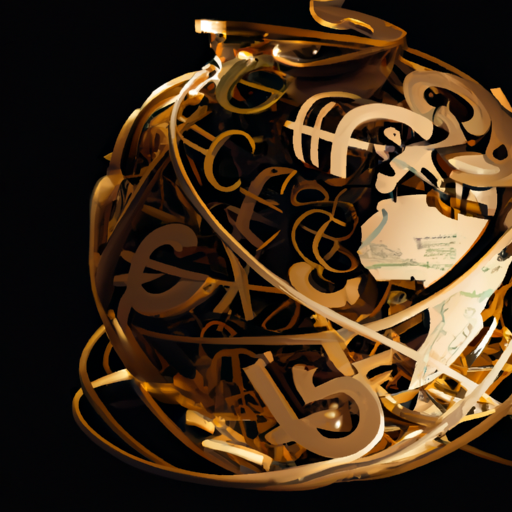Impact of Rising Diesel Prices
The Role of Saudi Arabia
You may be wondering why diesel prices are on the rise. Well, a major factor behind this increase is the actions taken by countries like Saudi Arabia. These actions, primarily driven by economic considerations, have resulted in an upward trend in oil prices. As diesel is derived from crude oil, its price is directly impacted by these fluctuations in the oil market. Saudi Arabia, being one of the world’s largest oil producers, holds significant control over the supply and, consequently, the price of oil. So, when they decide to cut production or increase prices, it affects diesel prices worldwide.
The Role of Russia
Another player in this scenario is Russia. Like Saudi Arabia, Russia is a major oil producer. However, the actions taken by Russia may have a slightly different effect on diesel prices. While their actions can also contribute to the overall increase in oil prices, it is important to note that these actions may have a greater impact on their local currency, the Rouble, rather than on global currencies like the dollar or euro. Therefore, the consequences of rising diesel prices in Russia may primarily affect their domestic market.
Effect on Currency Markets
The rise in diesel prices due to actions taken by Saudi Arabia and Russia can have a considerable impact on currency markets. As the value of a country’s currency is closely tied to its economic performance, any changes in oil prices can influence currency exchange rates. For instance, if a country heavily relies on oil exports and experiences a significant increase in its oil prices, its currency may strengthen against other currencies. On the other hand, a country highly dependent on oil imports may experience a depreciation of its currency. Such fluctuations in currency markets can, in turn, impact various financial markets, including the gold market.
The actions taken by Saudi Arabia and Russia have far-reaching implications on diesel prices, currency markets, and ultimately, the gold price in financial markets. The interplay between these factors creates a complex web of economic dynamics that shape the global landscape. By understanding the role of these key players and how they influence each other, you can better navigate the ever-changing world of financial markets.
Determining Gold Price in Financial Markets
Understanding the gold price in financial markets is essential for investors and traders looking to make informed decisions. The price of gold is influenced by various factors, including international events and currency markets.
Definition of Financial Markets
Financial markets are platforms where individuals, companies, and governments trade financial assets such as stocks, bonds, currencies, and commodities. These markets facilitate the flow of funds between borrowers and lenders, allowing investors to buy and sell assets to meet their financial goals.
Major Players in Financial Markets
Key participants in financial markets include banks, investment firms, hedge funds, and individual investors. These entities engage in buying and selling assets, providing liquidity, and influencing market trends.
Factors Influencing Financial Markets
Several factors can impact financial markets, ultimately affecting the price of gold. International events, such as political unrest, economic crises, and changes in global trade policies, can create uncertainty and drive investors towards safe-haven assets like gold. Additionally, fluctuations in currency markets, including the strength or weakness of major currencies like the US dollar and the euro, can also impact the demand and price of gold.
By understanding the dynamics of financial markets and the factors that influence gold prices, you can better navigate this complex landscape and make informed decisions to maximize your investment potential.
Determining Gold Price
Introduction to Gold Price Determination
When it comes to determining the price of gold in financial markets, there are several factors that come into play. Gold, often seen as a safe haven investment, is influenced by various economic and geopolitical factors around the world. Understanding these factors can help you make informed decisions when it comes to trading or investing in gold.
Factors Influencing Gold Prices
One of the key factors that affect the price of gold is the overall health of the global economy. In times of economic uncertainty or turmoil, investors tend to flock towards gold as a store of value. This increased demand for gold drives up its price. Similarly, geopolitical events such as political tensions or wars can also impact the gold market.
Additionally, interest rates and inflation play a significant role in determining the price of gold. When interest rates are low or inflation is high, investors often turn to gold as a hedge against inflation and a way to preserve their wealth.
Supply and demand dynamics also influence the gold price. Gold mining production, central bank purchases or sales, and gold recycling all contribute to the overall supply of gold in the market. Changes in any of these factors can have an impact on the price.
The gold price in financial markets is influenced by a combination of economic, geopolitical, and supply-demand factors. Keeping an eye on these factors can help you navigate the gold market and make informed decisions when it comes to your investments.

## Role of International Events
Geo-Political Events
International events and geopolitical factors play a significant role in determining the gold price in financial markets. Geo-political events, such as conflicts, wars, and political unrest, can create uncertainty and instability in the world markets. When tensions rise between countries or regions, investors often turn to gold as a safe haven asset, leading to an increase in its demand and, consequently, its price.
Economic Events
Economic events, such as changes in interest rates, inflation, and unemployment rates, also impact the gold price. When central banks lower interest rates or implement quantitative easing measures, it tends to weaken the value of the currency, making gold more attractive to investors. Additionally, inflationary pressures can erode the value of paper money, driving investors towards the stability and long-term value of gold.
Financial Events
Financial events, such as stock market crashes or economic recessions, can have a significant influence on the gold price. During times of financial turmoil, investors often seek refuge in gold as a safe asset, causing its price to rise. The reason behind this behavior is that gold is considered a hedge against economic uncertainties and a store of value.
International events, both geopolitical and economic, as well as financial events, all contribute to the determination of the gold price in financial markets. Understanding these factors is essential for investors who wish to navigate the dynamic nature of the gold market effectively.

## Impact of Currency Markets on Gold Price
Relationship Between Currency Markets and Gold Price
The price of gold in financial markets is significantly influenced by currency markets. Gold is globally traded and its price is denominated in major currencies such as the US dollar, euro, and pound sterling. Therefore, any fluctuations in these currencies can directly impact the price of gold.
When the value of a particular currency weakens, such as the Russian ruble, the price of gold tends to rise. This is because gold becomes more attractive to investors as a safe-haven asset during times of currency depreciation. On the other hand, if a currency strengthens, the demand for gold may decrease, leading to a decline in its price.
Effect of Exchange Rates on Gold Price
Exchange rates also play a crucial role in determining the gold price. When a currency appreciates against the US dollar, it becomes more expensive for buyers using that currency to purchase gold. This leads to a lower demand for gold, resulting in a potential decrease in its price. Conversely, when a currency weakens against the US dollar, the affordability of gold increases, attracting more buyers and potentially driving up its price.
Fluctuations in currency markets have a direct impact on the price of gold in financial markets. Understanding the relationship between currency movements and gold price can help investors make informed decisions and navigate the dynamics of the gold market effectively.
Role of Supply and Demand
Gold Supply
Determining the price of gold in financial markets involves considering several factors, and one of the major factors is the supply of gold. Gold supply refers to the amount of gold that is available for trading in the market. This supply is influenced by various factors, such as mining production, government policies on gold reserves, and recycling of gold.
Mining production plays a significant role in determining the supply of gold. The amount of gold extracted from mines affects the overall availability of gold in the market. Additionally, government policies regarding gold reserves and exploration can impact the supply of gold.
Gold Demand
Another crucial factor in determining the gold price is the demand for gold. Gold is prized for its intrinsic value and is widely used in jewelry, investment, and industrial applications. The level of demand for gold can be influenced by various factors, including economic conditions, geopolitical events, and investor sentiment.
During economic uncertainties, such as recessions or inflationary periods, the demand for gold tends to increase as investors seek a safe haven for their wealth. Similarly, during times of geopolitical tensions, the demand for gold as a hedge against uncertainty rises. Additionally, the demand for gold in the jewelry industry and industrial applications can also impact its price.
Impact on Gold Price
The interplay between gold supply and demand ultimately determines the price of gold in financial markets. When the demand for gold exceeds its supply, the price tends to rise. Conversely, when supply surpasses demand, the price may decline. Supply and demand imbalances can be influenced by various factors, including global economic trends, central bank policies, and market speculations.
It is important to keep track of international events that may impact currency markets, as they can indirectly affect the demand for gold. For example, fluctuations in oil and diesel prices, driven by countries like Saudi Arabia and Russia, can influence currency markets and subsequently impact the gold price.
Understanding the role of supply and demand in determining the gold price is essential for investors and traders in the financial markets. By staying informed about the factors influencing supply and demand dynamics, you can make more informed decisions regarding gold investments and trading strategies.

## Inflation and Gold Price
Inflation as a Driving Factor
When it comes to determining the gold price in financial markets, one of the key factors to consider is inflation. Inflation refers to the general increase in prices of goods and services over time, resulting in the erosion of purchasing power. As inflation rises, the value of a currency decreases, leading investors to seek alternative means to protect their wealth. This is where gold comes into play.
Relationship Between Inflation and Gold Price
Gold has long been considered a store of value and a hedge against inflation. Unlike fiat currencies, which can be easily printed and devalued, the supply of gold is limited, making it a scarce and highly sought-after asset. As inflation erodes the value of paper money, investors turn to gold as a safe haven investment.
Historically, there has been a positive correlation between inflation and the price of gold. When inflation is high, demand for gold tends to increase, driving its price up. In times of economic uncertainty, when inflationary pressures are particularly strong, gold prices often experience significant upward movements.
Inflation plays a pivotal role in determining the gold price in financial markets. As inflation rises, the attractiveness of gold as a store of value grows, driving up its price. So, keep an eye on inflation rates to better understand the movements in the gold market.

## Central Bank Policies and Gold Price
Role of Central Banks
Central banks play a crucial role in determining the gold price in financial markets. These institutions, such as the Federal Reserve (Fed) in the United States, have the power to influence the global economy through their monetary policies. The decisions made by central banks regarding interest rates, inflation targets, and currency exchange rates can significantly impact the demand and value of gold.
Central banks often hold significant gold reserves to safeguard their economies and maintain financial stability. The buying and selling of gold by these institutions can directly affect the gold price. For example, if a central bank decides to increase its gold reserves, it creates demand, which can drive the price of gold higher.
Gold Reserves and Monetary Policies
Central banks’ monetary policies, including quantitative easing or tightening, can also influence the gold price. During periods of economic uncertainty, central banks may implement expansionary monetary policies, which involve printing money and lowering interest rates. These actions can lead to inflationary pressures and a decrease in the value of fiat currencies. As a result, investors often turn to gold as a safe-haven asset, driving up its price.
Conversely, when central banks adopt contractionary monetary policies, such as raising interest rates, to combat inflation, it can have a negative impact on the gold price. Higher interest rates make gold less attractive as an investment compared to interest-bearing assets, thus reducing demand.
Central bank policies and actions have a significant influence on the gold price. Understanding these factors is crucial for investors and market participants looking to navigate the complexities of the financial markets.

## Market Sentiment and Gold Price
Investor Sentiment
One of the key factors that determine the gold price in the financial markets is investor sentiment. When there is uncertainty or fear in the market, investors often turn to gold as a safe-haven asset. This increased demand for gold drives up its price. Investors view gold as a reliable store of value during times of economic instability or geopolitical tensions. So, if there is a negative market sentiment due to factors like political unrest, economic downturn, or global conflicts, the demand for gold tends to rise, causing its price to increase.
Safe-Haven Demand for Gold
Another factor that affects the gold price in financial markets is the safe-haven demand. Gold has a long-established reputation as a safe-haven asset, meaning that it holds its value or even increases in value when other investments decline. During times of economic turmoil or market volatility, investors seek the stability and security that gold offers. Therefore, any events or news that create uncertainty or instability in the markets can lead to a surge in safe-haven demand for gold, resulting in a higher price.
The gold price in financial markets is influenced by investor sentiment and the safe-haven demand for gold. Understanding these factors can help you make informed decisions when trading or investing in gold. By keeping an eye on market sentiment and considering the demand for safe-haven assets, you can better navigate the fluctuations of the gold market.
Technological Developments in Gold Market
In today’s fast-paced financial markets, technological advancements have significantly impacted the way gold prices are determined. From the impact of technology on gold trading to the influence of digital currencies on the gold price, these developments have revolutionized the gold market.
Impact of Technology on Gold Trading
Technology has brought about rapid changes in the gold trading landscape. Online platforms and electronic trading systems have made it easier for investors to buy and sell gold, eliminating the need for physical transactions. These advancements have increased transparency and accessibility, allowing individuals from all over the world to participate in the gold market.
Moreover, the introduction of sophisticated trading algorithms and artificial intelligence has transformed gold trading strategies. These tools enable investors to analyze vast amounts of data and make more informed investment decisions. As a result, market efficiency and liquidity have improved, leading to more accurate gold price determination.
Digital Currencies and Gold Price
The rise of digital currencies, such as Bitcoin, has also had a significant impact on the gold price. While gold has traditionally been considered a safe-haven asset, digital currencies have emerged as alternative investment vehicles. Their decentralized nature and potential for high returns have attracted investors seeking diversification.
As digital currencies gain popularity, their relationship with gold becomes intertwined. Some investors see Bitcoin as “digital gold” and invest in it during periods of uncertainty. This can influence the demand for gold and ultimately affect its price in the financial markets.
In conclusion, technological developments in the gold market have revolutionized the way gold prices are determined. From the impact of technology on gold trading to the influence of digital currencies, these advancements have brought about increased accessibility, improved market efficiency, and new dynamics in the gold market.


